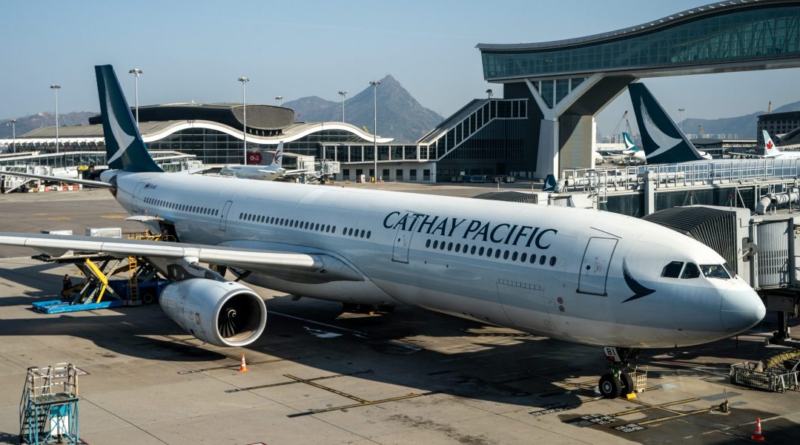Hong Kong’s Cathay Pacific is slashing the amount of time it takes to become a captain as it tries to battle a manpower crunch
Cathay Pacific, Hong Kong’s leading airline, was likely hoping for a good start to 2024. The carrier is expecting its first annual profit in four years, after the COVID pandemic severely affected its operations. Yet the carrier is instead scrambling to avoid a labor crunch, after cancelling dozens of flights to free up manpower ahead of the busy Lunar New Year period.
The airline is now cutting the time needed to become a captain, letting first officers apply for captain training after 3,000 flying hours, down from 4,000 hours. Hong Kong’s Civil Aviation Department approved the decision in November, and the airline introduced it into its operations manual last week, according to the South China Morning Post.
The airline is characterizing the change as offering an additional option to first officers who primarily travel short-haul routes. Cathay Pacific’s general manager for flying Tim Burns said in a statement that the option will allow first officers to be considered for captain training “within a reasonable time.” Pilots choosing the 3,000 flying hours option will also need to fly 500 sectors, or flying a plane between point A and B.
“A short-haul pilot can accrue around 75 take-off and landing experiences with only 225 flying hours, while a pilot operating long haul routes generally requires nearly 900 flying hours to achieve the same number of take-off and landing experiences,” he explained.
The Hong Kong Aircrew Officers Association, which represents Cathay pilots, is casting doubt on the new requirements, and instead suggests that the airline rehire already-trained pilots, according to the South China Morning Post. The HKAOA did not immediately respond to Fortune’s request for comment.
Labor struggles
The COVID pandemic—or, specifically, the Chinese city of Hong Kong’s response to it—was a crisis for Cathay Pacific. Hong Kong’s government imposed strict travel restrictions, including lengthy quarantine stays for all international arrivals. Air travel to the city fell by 98%.
To survive, Cathay Pacific cut pay, laid off staff, and asked employees to go on voluntary unpaid leave. Close to 6,000 employees were fired in October 2020, accounting for about 24% of Cathay Pacific’s total staff. The HKAOA estimates that an additional 1,000 pilots resigned after Cathay Pacific’s staffing decisions.
The Hong Kong government stepped in to bail out the airline in June 2020 after it reported a net loss of $500 million in the first four months of that year.
Post-pandemic, the airline has focused on rehiring. In November, CEO Ronald Lam said it planned to hire 5,000 people across the group as flight capacity returns to pre-pandemic levels.
The global aviation industry also faced delays and disruptions through 2022 and parts of 2023 as people took to travelling by air again. Airports too struggled to rehire ground crew and air traffic controllers at a speed that matched the rise in travel demand. The U.S. Federal Aviation Administration has a shortage of air traffic controllers, which has forced the agency to slow down air traffic to help prevent missteps.
Still not enough
Air travel could be rebounding too quickly for Cathay. The airline called off almost 70 flights during the Christmas and New Year’s holidays, blaming “higher-than-expected pilot absences caused by seasonal illnesses” according to the South China Morning Post.
The airline is also cancelling an average of a dozen flights per day until the end of February in order to ensure smooth operations during the Lunar New Year travel rush.
The chaos is even attracting official scrutiny, with chief executive John Lee saying the government was “very concerned” with the situation.
The HKAOA attributed the cancellations to the airline’s 2020 decisions to cut down on benefits, pay and manpower. The airline’s passenger operations are running with just over half of the captains and first officers the airline used to have, according to the organization.
Shares of Cathay Pacific are down about 19% since Jan. 3, 2020, the start of the COVID pandemic.




